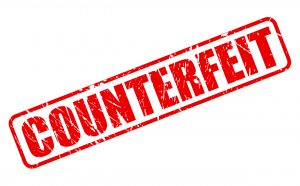In its 2020 Review of Notorious Markets for Counterfeiting and Piracy, the United States Trade Representative warns:
“Commercial-scale copyright piracy and trademark counterfeiting cause significant financial losses for U.S. right holders and legitimate businesses, undermine critical U.S. comparative advantages in innovation and creativity to the detriment of American workers, and pose significant risks to consumer health and safety.”
The huge increase in online commerce is portentous of this trend. Just in the United States, in the first quarter of 2019, e-commerce retail sales grew by 13.3 percent while total retail sales increased by only 3.2 percent. Amazon reported sales by third-party sellers grew from $0.1 billion in 1999 to $160 billion by 2018. In 2018, eBay sold $95 billion worth of goods and Walmart’s e-commerce sales increased by 40 percent.
According to the Trade Representative, “counterfeit and pirated goods has grown alongside e-commerce.” The Organisation for Economic Cooperation and Development (OECD) estimates based upon 2016 data that the volume of international trading in counterfeit and pirated products was approximately USD 509 billion!
To state the obvious, this sounds like a problem. So, what can be done? This month, a bipartisan (no kidding) group of legislators announced the “Stopping Harmful Offers on Platforms by Screening Against Fakes in E-commerce Act of 2020” otherwise known as “The Shop Safe Act of 2020”. The Act imposes responsibility on the e-commerce platforms themselves for preventing sale of counterfeit goods. This might be a game changer because the law currently places the burden mostly on e-commerce sellers – i.e., the IP owners themselves – to police their intellectual property rights. But let’s dig a little deeper:
According to the House Committee on the Judiciary, the new Act would:
- Establish trademark liability for online marketplace platforms when a third-party sells a counterfeit product that poses a risk to consumer health or safety and that platform does not follow certain best practices;
- Incentivize online platforms to establish best practices such as vetting sellers to ensure their legitimacy, removing counterfeit listings, and removing sellers who repeatedly sell counterfeits; and
- Call for online marketplaces to take steps necessary to prevent the continued sale of counterfeits by the third-party seller or face contributory liability for their actions.
The Act provides,
An electronic commerce platform shall be contributorily liable for infringement by a third-party seller participating on the platform for use in commerce of a counterfeit mark in connection with the sale, offering for sale, distribution, or advertising of goods that implicate health and safety, unless [certain requirements are met].
Those requirements include 10 acts taken by the e-commerce platform to stop the infringing activity:
- Verified identity, place of business, and contact information of third-party seller against governmental and other reliable sources
- Required the third-party seller to verify the authenticity of its products
- Required as a condition of using the platform that sellers agree not to use counterfeit marks and to consent to the jurisdiction of U.S. courts in any claims related to selling on the platform
- Conspicuously displayed the seller’s place of business, contact information, and identity along with manufacture location and shipping origin of the goods
- Required sellers to use accurate images that they own or have permission to use to advertise products
- Implemented technological means for screening out counterfeits before they are listed publicly
- Created a program to quickly remove any counterfeit listings
- Banned any seller that has sold counterfeits over three times
- Created a system to screen new sellers so previously banned sellers do not re-register even under other names
- Provided verification information in Clause 1 to relevant law enforcement and to the registrant if requested
Note that the Act specifically addresses counterfeiting related to “goods that implicate health and safety.” The Act defines such goods as those
which can lead to illness, disease, injury, serious adverse event, allergic reaction, or death if produced without compliance with all applicable Federal, State, and local health and safety regulations and industry-designated testing, safety, quality, certification, manufacturing, packaging, and labeling standards.
The goal of the legislation, as stated by the drafters, is to protect the public from unsafe and untested products. In light of recent reports of defective pandemic-related goods flooding the market, this is a worthwhile goal but does the proposed law fix the broader problem of counterfeiting and trademark infringement? It’s doubtful. The Act may apply to many “health and safety” related goods but it’s not likely to stem the flow, for example, of counterfeit luxury goods, which the U.S. Trade Representative suggests may account for a large percentage of counterfeit products. On the other hand, if the Act becomes law, there may be an enforcement spillover effect on other classes of products that may help stem the rising tsunami of counterfeiting.
We will continue to follow the passage of this bill through Congress.
— Adam G. Garson, Esq.


